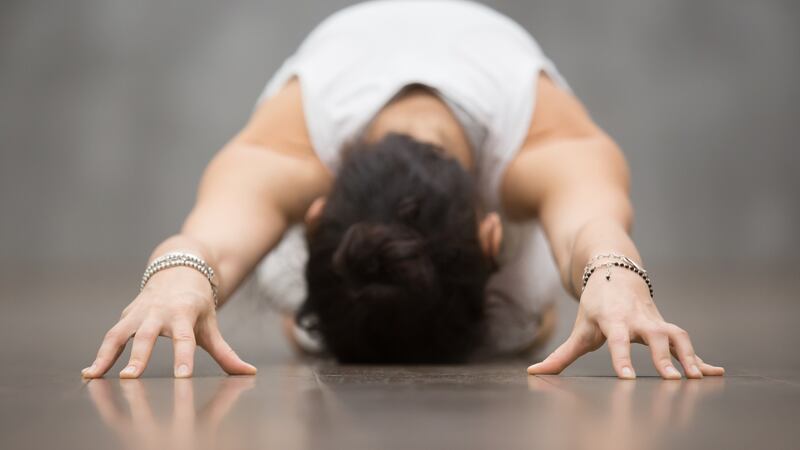Late 2012 was the bleakest time I had ever known. Over weeks that became months, I waited for my divorce to be finalised and meanwhile my mind unravelled. I found it hard to write, think, eat or take pleasure in anything; I could not imagine what it would be like to feel happy again; I could not find any hope or purpose.
I struggle now to remember why one Monday morning around that time I decided to head to a hot yoga studio in east London and sign up for a 30-day trial. I do not remember the class, how much I sweated nor how terrible I was. But I do know that I began going to hot yoga every day.
Sometimes, when my head felt as if it might collapse, I went twice. I skipped parties, left social events and got up hideously early to attend. There was something about the hot room that held me together, that stopped all the dark thoughts tangling around my insides.
Believe me when I say that you do not spend those 90 minutes admiring your physique; rather you use the mirrors as an aid to focus
The kind of hot yoga I chose was the Bikram method: a set of 26 postures and two breathing exercises performed over 90 minutes in heat that hovers between 35C and 42C with 40 per cent humidity. It is a contentious form of yoga following its founder Bikram Choudhury’s failed attempt to copyright his method, and the numerous claims of sexual assault against him, beginning in 2013. Many studios have understandably sought to distance themselves from the Bikram brand, renaming the classes “Hot 26”.
Even before the expose, many practitioners claimed that Bikram was not real yoga. Some questioned the limitations of just 26 postures and an accompanying script learned and delivered rote-like by teachers. Others wondered why the class had to be performed before a wall of mirrors, as if it might be more of an exercise in vanity than a moving meditation.
I understand such suspicions, perhaps even once felt them myself, but my Bikram experience was transformative. Something in the rigorous repetition of those 26 postures freed my mind, dragged me out of the mire of my thoughts and back into the present. I was able to focus on how each day my body behaved differently. How on Tuesday morning my standing bow might be unwavering, then on Wednesday afternoon I might fall out of the posture twice, but find I had somehow advanced in triangle pose.

The mirrors are perhaps harder to explain, especially in a class so sweltering it demands that practitioners wear minimal clothing. But believe me when I say that you do not spend those 90 minutes admiring your physique; rather you use the mirrors as an aid to focusing on the minutiae of your postures. At a point when I could barely look at myself, the necessity of staring at a mirror each day brought me a kind of self-acceptance that I had never experienced before. I felt as if I were finally befriending myself.
There were physical changes, too: I became lean and poised, my skin glowed, I had more energy and I slept well. Getting dressed was no longer a process of hiding my body and I had a surging sense of invincibility. I prided myself on being able to bound up escalators without breaking a sweat or pausing for breath. I became the kind of evangelical fool who implores near-strangers to try their favourite form of exercise. I found a physical ease I don’t think I’ve had since I was a child. I discovered the intense euphoria that follows a class and the particular joy that accompanies a post-Bikram beer.
I try to remember the woman I was in late 2012, half-broken, walking into an unfamiliar yoga studio
For three and a half years, until I moved away from London, I maintained a near-daily practice. Today, although I generally manage to make a class about three times a week, I still find the hardest part of my relocation the absence of Bikram. A physical and mental sluggishness descends when I do not practise daily. Lately, I’ve explored other forms of hot yoga: vinyasa flow, Forrest, power, classes performed in less ferocious heat, sometimes in inflatable pods, often to music. And although I have yet to love them as fiercely as the Bikram method, I try to remind myself of the importance of being open to something new and potentially wonderful.
I try to remember the woman I was in late 2012, half-broken, walking into an unfamiliar yoga studio. I remind myself how much has changed since then, how much I have changed, the fearlessness I have found. When I describe that time to people, I tell them that when my brain was broken I focused on my body until my mind returned to me.
I tell them how hot yoga not only changed my life; I genuinely feel it saved it, too. – Guardian










